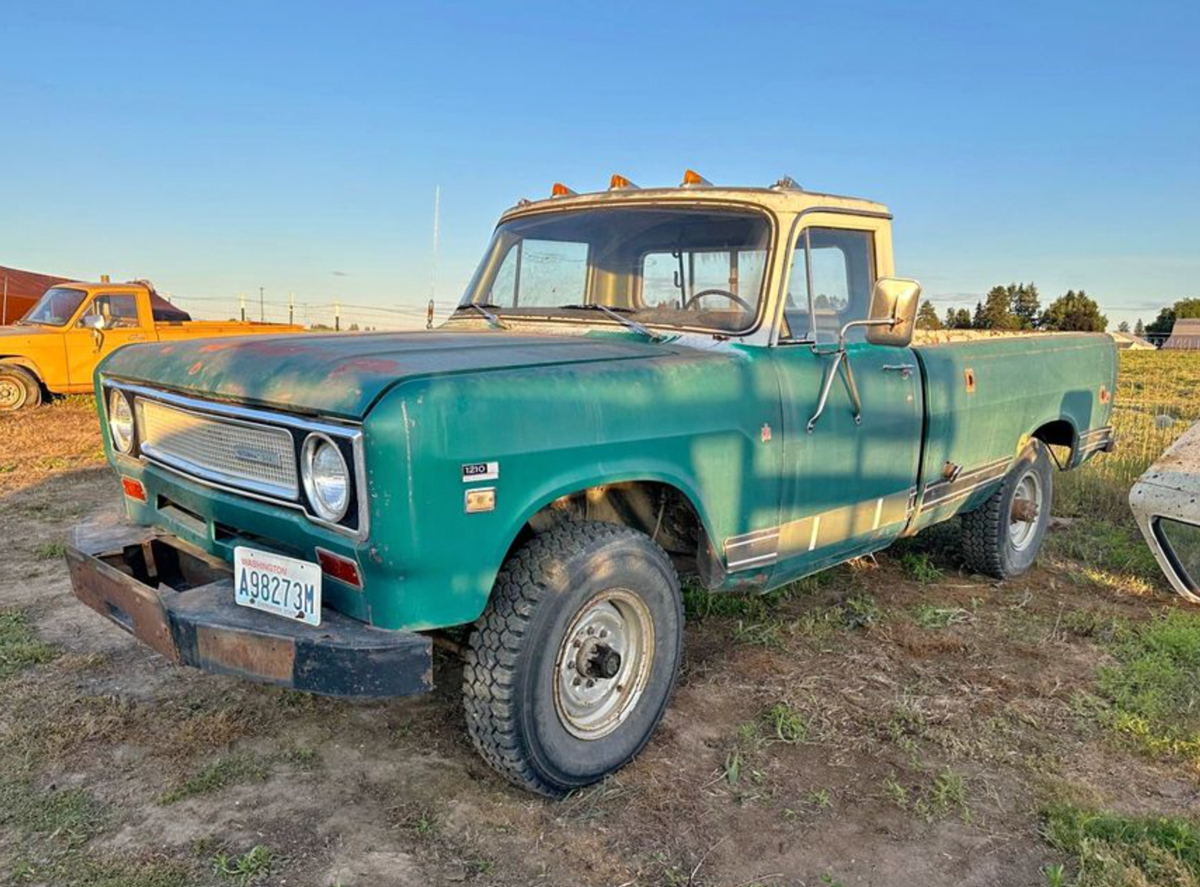Feed Trucks For Sale Near Me: Your Comprehensive Guide to Finding the Perfect Mixer pickup.truckstrend.com
In the vast and dynamic world of modern agriculture, efficiency and precision are paramount. For livestock operations, whether large commercial farms or smaller family-run outfits, the ability to accurately and consistently deliver nutrition to animals is a cornerstone of success. This is where the feed truck, a specialized piece of heavy machinery, becomes indispensable. More than just a vehicle, a feed truck is a mobile feed processing and delivery system, designed to mix various feedstuffs into a homogeneous ration and distribute it directly to troughs or bunks. If you’re searching for "feed trucks for sale near me," you’re likely on the cusp of a significant investment that promises to streamline your feeding operations, improve animal health, and ultimately boost your bottom line. This guide will walk you through everything you need to know about finding, evaluating, and purchasing the ideal feed truck for your needs.
What is a Feed Truck and Why Do You Need One?
Feed Trucks For Sale Near Me: Your Comprehensive Guide to Finding the Perfect Mixer
A feed truck, often referred to as a TMR (Total Mixed Ration) mixer wagon, is a sophisticated piece of equipment comprising a chassis-mounted mixer, a weighing system, and a discharge mechanism (usually an auger or conveyor belt). Its primary function is to blend various feed ingredients – grains, silage, hay, supplements, and concentrates – into a balanced and consistent diet that optimizes animal health and productivity.
Components of a Typical Feed Truck:
- Mixer Body: This is the core, where ingredients are blended. It can be vertical (using large augers to lift and tumble feed) or horizontal (using paddles or smaller augers to mix horizontally).
- Weighing System: Integrated digital scales ensure precise measurement of each ingredient, crucial for maintaining nutritional accuracy and controlling feed costs.
- Discharge System: Typically a series of augers or a conveyor belt that allows for controlled and even distribution of the mixed feed into feed bunks.
- Power Unit: For truck-mounted units, this is the truck’s engine. For trailer models, it’s often a PTO (Power Take-Off) from a tractor or a dedicated auxiliary engine.

Why You Need One:
- Nutritional Precision: TMRs ensure every bite an animal takes contains the exact intended nutrient profile, leading to better digestion, reduced waste, and improved production (milk yield, weight gain).
- Efficiency and Labor Savings: Automates the mixing and delivery process, significantly reducing manual labor and the time required for feeding.
- Cost Control: Accurate weighing minimizes overfeeding and ingredient waste, leading to substantial savings on feed costs over time.
- Improved Animal Health: Consistent nutrition reduces digestive upsets, improves herd health, and can lead to fewer veterinary expenses.
- Flexibility: Allows for easy adjustments to rations based on animal groups, weather conditions, or changes in feed availability.

Feed trucks are essential for dairy farms, beef cattle operations, and even some large sheep or goat enterprises where consistent and customized feeding programs are critical.
Types of Feed Trucks: Choosing the Right Mixer

The world of feed trucks offers a variety of configurations, each with its own advantages. Understanding these types is crucial for making an informed decision.
-
By Mixer Design:
- Vertical Mixers: These are very popular due to their ability to handle a wide range of ingredients, including whole bales of hay. They use one or more large vertical augers to lift and tumble feed, creating a fluffy, uniform mix. They are generally more forgiving with different particle sizes and can process tougher forages.
- Horizontal Mixers: These mixers use a series of horizontal augers or paddles to blend feed. They are often preferred for operations primarily using finely processed ingredients or where a denser mix is desired. They can be very fast but may struggle with whole bales unless pre-processed.
-
By Mounting Configuration:
- Truck-Mounted Feed Trucks: These units are permanently mounted on a truck chassis, offering excellent mobility and speed for larger operations that need to cover significant distances between feed storage and animal pens. They are self-contained and don’t require a separate tractor. This is primarily what "Feed Trucks For Sale Near Me" refers to.
- Trailer/Pull-Type Feed Mixers: These units are pulled by a tractor and are ideal for operations where the mixing unit doesn’t need to travel far or where a dedicated feed truck isn’t justified. While not strictly "feed trucks," they are a common alternative.
- Stationary Mixers: Less common for direct feeding, these are fixed units often found in large feed mills or processing centers, with feed transported by other means.
-
By Drive System:
- PTO (Power Take-Off) Driven: Common for trailer mixers, drawing power from the tractor.
- Hydraulic Driven: Often found on truck-mounted units, utilizing the truck’s hydraulic system or a dedicated auxiliary engine.
-
By Capacity:
- Feed truck capacities are measured in cubic feet (cu ft) and can range from small units (e.g., 200-400 cu ft) suitable for smaller herds to massive commercial units (e.g., 1000+ cu ft) for thousands of head. Your herd size and feeding frequency will dictate the appropriate capacity.
Where to Find Feed Trucks For Sale Near Me
The quest for a feed truck "near me" involves exploring various avenues, both online and in your local agricultural community.
-
Authorized Dealerships:
- New Equipment: Local dealerships for major agricultural machinery brands (e.g., John Deere, Case IH, New Holland, Kubota) often carry or can order new feed trucks from specialized manufacturers like Supreme, Roto-Mix, Jay-Lor, Kuhn Knight, and Art’s Way. Buying new offers warranties, the latest technology, and financing options.
- Used Equipment: Many dealerships also have a trade-in program and a selection of used feed trucks. These are often inspected and serviced, offering a level of confidence not always found in private sales.
-
Online Agricultural Marketplaces:
- Dedicated Farm Equipment Sites: Websites like TractorHouse.com, MachineryTrader.com, and FarmEquipment.com are excellent resources. You can filter by equipment type, brand, price, and location, allowing you to quickly identify "feed trucks for sale near me."
- General Classifieds: Craigslist and Facebook Marketplace can sometimes yield local gems, especially from private sellers. Be cautious and thorough with inspections when using these platforms.
- Auction Websites: Proxibid, BigIron, and other online auction platforms frequently feature farm equipment, including feed trucks. You might find a great deal, but bidding requires quick decision-making and often "as-is, where-is" terms.
-
Local Auctions & Farm Sales:
- Keep an eye on local agricultural newspapers, online listings, and community boards for announcements of farm auctions or estate sales. These can be excellent opportunities to see equipment in person and potentially snag a deal.
-
Networking & Word-of-Mouth:
- Talk to other farmers, custom feeders, and agricultural consultants in your area. They might know of someone looking to upgrade, downsize, or sell their equipment. Local co-ops or feed mills can also be good sources of information.
Key Considerations When Buying a Used Feed Truck
While new feed trucks come with peace of mind, a well-maintained used unit can offer significant savings. However, thorough inspection is paramount.
-
Condition of the Mixer Body:
- Liner Wear: Check the interior liner for wear, especially at the bottom and sides. Excessive wear indicates the need for costly replacement.
- Auger/Paddle Integrity: Inspect the mixing augers (vertical) or paddles (horizontal) for wear, bends, cracks, or missing sections. The cutting knives on vertical mixers should be sharp.
- Rust and Corrosion: Look for excessive rust, particularly in areas where feed accumulates or moisture sits. Structural rust can compromise the mixer’s integrity.
-
Weighing System (Scales):
- Accuracy: If possible, test the scales with known weights. Inquire about the last calibration date. Load cell issues or wiring problems can be expensive to fix.
- Display: Ensure the digital display is functional and readable.
-
Engine & Drivetrain (for truck-mounted units):
- Mileage/Hours: High mileage or hours can indicate significant wear.
- Maintenance Records: Ask for detailed service history. Regular oil changes, fluid checks, and filter replacements are crucial.
- Test Drive: Listen for unusual noises, check transmission shifts, and verify brake performance.
-
Hydraulics:
- Inspect hoses, cylinders, and pumps for leaks, cracks, or signs of wear. Smooth, consistent operation is key for discharge and other functions.
-
Tires & Brakes:
- Assess tire tread depth and condition. Replacement tires for heavy equipment can be very expensive.
- Ensure brakes are in good working order for safety, especially on a heavy vehicle.
-
Overall Frame and Chassis:
- Look for cracks, bends, or significant rust on the main frame. These could indicate structural issues from overloading or rough use.
-
Brand Reputation and Parts Availability:
- Stick to reputable brands (Supreme, Roto-Mix, Jay-Lor, Kuhn Knight, Art’s Way, Penta) that have readily available parts and good dealer support in your region.
-
Pre-Purchase Inspection:
- If you’re serious about a used unit, consider hiring a qualified mechanic or agricultural equipment specialist to perform a thorough inspection. This investment can save you from costly surprises.
New vs. Used: Making the Right Choice
The decision between a new and used feed truck hinges on several factors:
-
New Feed Truck:
- Pros: Latest technology, warranty coverage, reliable performance, customizability, often easier financing.
- Cons: Higher initial cost, rapid depreciation in the first few years.
- Best for: Large operations with consistent cash flow, those prioritizing reliability and cutting-edge features, or those without the time/expertise for detailed used equipment inspections.
-
Used Feed Truck:
- Pros: Significantly lower initial cost, depreciation has already occurred, potentially quicker ROI.
- Cons: No warranty (or limited), potential for hidden issues, may require immediate repairs, older technology.
- Best for: Smaller to medium-sized operations, those with a tighter budget, or buyers with mechanical aptitude willing to do some repairs.
Financing Your Feed Truck Purchase
Whether new or used, a feed truck is a substantial investment.
- Dealer Financing: Many dealerships offer in-house financing or work with specific lenders.
- Bank Loans: Traditional banks often provide equipment loans, which may offer competitive rates if you have a good relationship.
- Agricultural Lenders: Specialized agricultural lenders understand the unique financial cycles of farming and may offer more flexible terms.
- Leasing: For some, leasing can be an attractive option, offering lower monthly payments and tax advantages, though you won’t own the equipment at the end of the term.
Always compare interest rates, loan terms, and down payment requirements from multiple sources.
Maintenance Tips to Extend Your Feed Truck’s Life
Once you’ve acquired your feed truck, diligent maintenance is key to maximizing its lifespan and preventing costly breakdowns.
- Daily Cleaning: Remove leftover feed, especially from the mixer body, discharge augers, and around the scales. This prevents corrosion and build-up.
- Regular Greasing: Follow the manufacturer’s recommendations for greasing all pivot points, bearings, and moving parts.
- Oil and Filter Changes: Adhere to the engine’s maintenance schedule for oil, fuel, and air filter changes.
- Check Mixer Components: Regularly inspect auger flights, paddles, and liners for wear. Replace worn parts promptly to maintain mixing efficiency.
- Scale Calibration: Calibrate your weighing system regularly (e.g., annually or semi-annually) to ensure accuracy.
- Hydraulic System Checks: Inspect hoses and fittings for leaks, and check hydraulic fluid levels.
- Tire Pressure and Condition: Maintain correct tire pressure to ensure even wear and fuel efficiency. Inspect for cuts or bulges.
- Winterization: In cold climates, follow specific procedures for winterizing the engine, hydraulic system, and water-based components to prevent freezing.
Practical Advice and Actionable Insights
- Define Your Needs: Before you start searching, clearly determine your required capacity, mixer type (vertical/horizontal), and budget.
- Set a Realistic Budget: Factor in not just the purchase price but also potential repair costs for used units, transportation, and ongoing maintenance.
- Don’t Rush: Take your time to research and inspect multiple options. A hasty decision can lead to regret.
- Negotiate: Always be prepared to negotiate the price, especially on used equipment.
- Consider Transportation: If the feed truck isn’t truly "near me," factor in the cost and logistics of transporting heavy equipment.
Concluding Summary
A feed truck is a transformative investment for any livestock operation, offering unparalleled precision, efficiency, and cost savings in feed management. Whether you opt for a brand-new, technologically advanced unit or a carefully vetted used model, understanding the different types, knowing where to search, and conducting thorough inspections are critical steps. By prioritizing diligent research, smart financial planning, and ongoing maintenance, you can confidently navigate the market for "feed trucks for sale near me" and acquire a machine that will serve as a valuable asset to your farm for years to come, contributing significantly to the health of your animals and the profitability of your operation.
Feed Truck Price Guide Table
Please note: These are estimated price ranges and can vary significantly based on brand, age, condition, features, specific location, and market demand. Always verify prices with sellers.
| Type & Condition | Mixer Type | Capacity (Cubic Feet) | Estimated Price Range (USD) | Key Features / Notes |
|---|---|---|---|---|
| New (Entry-Level) | Vertical/Horizontal | 300 – 500 | $80,000 – $150,000 | Basic model, standard scales, good for smaller to medium farms. Warranty included. |
| New (Mid-Range) | Vertical/Horizontal | 500 – 800 | $150,000 – $250,000 | Advanced scales, larger capacity, more robust components, optional features. |
| New (High-Capacity/Premium) | Vertical/Horizontal | 800 – 1200+ | $250,000 – $400,000+ | Top-tier brands, heavy-duty construction, advanced automation, multiple discharge options. |
| Used (Poor/Fair Condition) | Vertical/Horizontal | 400 – 800 | $20,000 – $50,000 | Older models, high hours/mileage, may require significant repairs (liner, augers, engine work). "As-is" sales. |
| Used (Good Condition) | Vertical/Horizontal | 400 – 1000 | $50,000 – $120,000 | Well-maintained, some wear but functional. May have recent repairs. Good value. |
| Used (Excellent Condition) | Vertical/Horizontal | 500 – 1200+ | $120,000 – $200,000+ | Newer used models, low hours/mileage, well-cared for, often from reputable dealers with some service history. |
Frequently Asked Questions (FAQ) About Feed Trucks
Q1: How often should I calibrate the scales on my feed truck?
A1: It’s recommended to calibrate your feed truck scales at least once a year, or more frequently if you notice any discrepancies in feed usage or animal performance. Temperature fluctuations and heavy use can affect accuracy. Regular calibration ensures precise rationing and cost control.
Q2: What is the typical lifespan of a feed truck?
A2: With proper maintenance, a feed truck can last anywhere from 10 to 20 years or even longer. The mixer body components (liners, augers) may need replacement or repair every 5-10 years depending on use and materials mixed, but the chassis and engine can have a longer life.
Q3: Can I convert a regular dump truck into a feed truck?
A3: No, a regular dump truck cannot be effectively converted into a feed truck. Feed trucks are highly specialized machines with integrated mixing augers, precise weighing systems, and designed discharge mechanisms. The structural integrity, power requirements, and precision engineering are vastly different from a standard dump truck.
Q4: What are the main ongoing operating costs for a feed truck?
A4: Key operating costs include fuel, routine maintenance (oil changes, greasing, filter replacements), wear parts (auger knives, liner plates), tire replacement, scale calibration, and potential major repairs (engine, transmission, hydraulic pump). Labor costs for operation should also be factored in.
Q5: Is a larger capacity feed truck always better?
A5: Not necessarily. While a larger capacity means fewer trips, it also comes with a higher purchase price, potentially higher fuel consumption, and may be harder to maneuver on smaller farms. Choose a capacity that matches your herd size, feeding frequency, and the layout of your operation to optimize efficiency without overspending.
Q6: Are there any specific permits or licenses required to operate a feed truck?
A6: For most farm operations, standard vehicle registration and a valid driver’s license (potentially a Commercial Driver’s License or CDL if the truck’s Gross Vehicle Weight Rating (GVWR) exceeds state-specific thresholds for commercial vehicles, usually 26,001 lbs) are required. Specific permits for the feed mixing function itself are generally not needed, but check local and state regulations. If you’re doing custom feeding for others, additional business licenses might apply.



